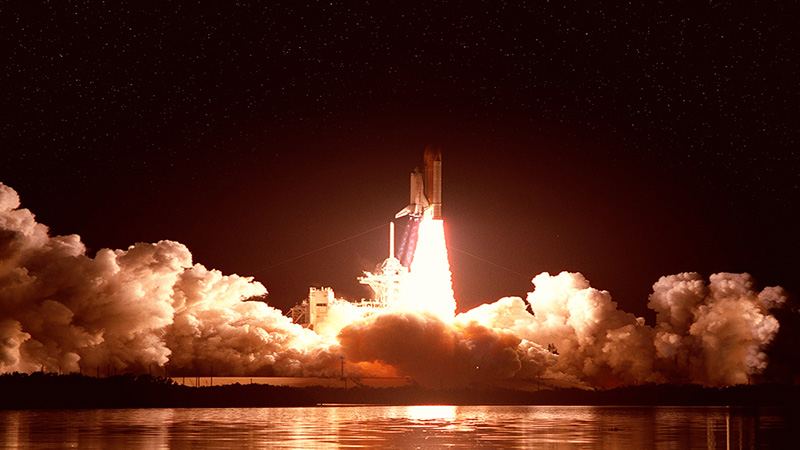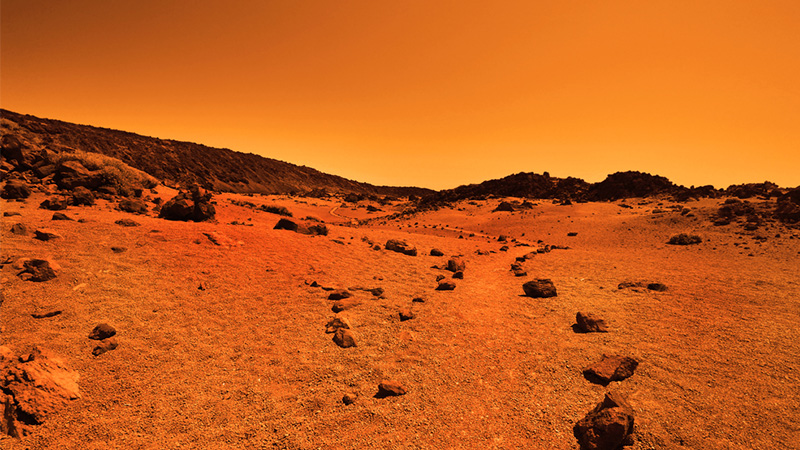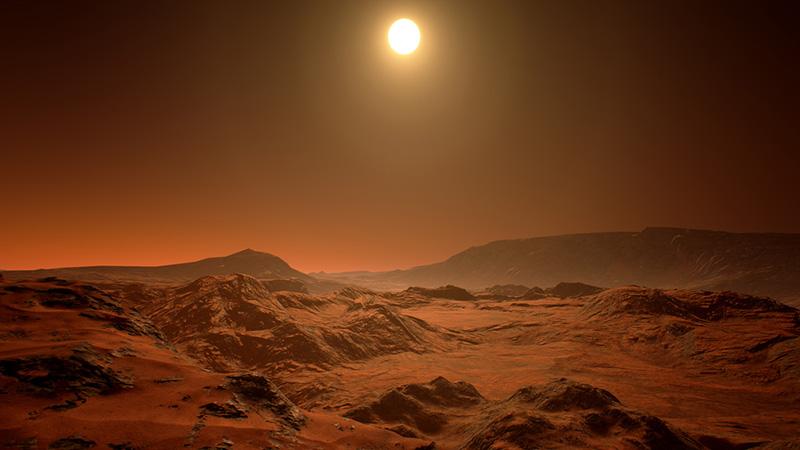Mars Polar Lander Mission
The Mars Polar Lander spacecraft was successfully launched from the Cape Canaveral Air Force Station in Florida, USA on January 3, 1999. Finnish skills in making some microprocessor systems and meteorological instruments in space technology are well known. Thus, the landing vehicle of the Mars Polar Lander mission is equipped with FMI/GEO’s Finnish special measurement electronics, including two pressure measurement instruments based on Vaisala’s BAROCAP® and THERMOCAP® sensors.
Three representatives of the Geophysical Research Unit of the Finnish Meteorological Institute (FMI/GEO) – Jouni Polkko, Pekka Riihelä and the author – were present at the spectacular launch of the Mars Polar Lander.
The conquering of Mars...
It has long been realized that a project as big as the “conquering of Mars” is only possible by international cooperation. The Mars Polar Lander (MPL) project has been organized by the United States, Finland and Germany. The landing craft is equipped with FMI/GEO’s special measurement electronics, and two pressure measurement instruments based on Vaisala’s BAROCAP® and THERMOCAP® sensors, but delivered by FMI/GEO.
FMI/GEO has a representative on the MPL’s nine-member scientific group. The MPL will land near the Martian south polar region in December 1999 and perform the major part of its observations during the first three months, after which the spacecraft should remain functional for more than a year.
For some days before the launch of the Mars Polar Lander, the weather was stormy and cold in the eastern side of the United States. This troubled the launch team, because due to the orbital mechanics the launch window opened for only about one second per day. On the night before it was due, two medium-sized tornadoes formed a threat and the temperature dropped to zero Celsius degrees around Cape Canaveral – the coldest it had been in Florida for two years. TV channels reported that heavy snow falls had affected the northern and middle parts of the United States.
However, when the day of the launch – Sunday, January 3 – dawned, all was clear. The storms of the previous day had completely ceased.

...heads for launch!
The Delta launch vehicle, operated by the U.S. Air Force, pointed upwards into a blustery, cloud-covered Florida sky at the Cape Canaveral Air Station Launch Complex.
Although the total length of the launch window was three weeks, it was opened daily for approximately one second. The space shuttle and weather conditions have to be optimal at a certain time of the day, otherwise the launch will be postponed till the next day.
On January 3, the launch window was opened at 3.21 p.m. Eastern Standard Time.
Only one hour before the launch, the upper-air winds in the upper atmosphere were too strong, but calmed down just at the right time. The feeling was tremendous as the announcers started paging, thirty minutes before the launch, through loud speakers and finally the marginal words – “...thermal system – go! ALL SYSTEMS – GO, we are heading for launch!”
The liftoff looked – and sounded – impressive. Enormous flames, smoke clouds and trembling sound amazed everybody. The observation area was so far from the launch site that when a stormwind-like rending thunder reached the observation area, the rocket had already disappeared above the thin veil of clouds. The observers could see only a tornado-like smoke pillar in the observation area. One can just image how spectacular an audiovisual play the launch would have been, if it had been a cloudless night.
The next morning started with an early general meeting.
The status of the Mars Polar Lander was reported to be good, though there were some minor problems with the Star Tracker. In the meeting, all the tired-looking key engineers, who had been awake all night, gave further information on the MPL status. The atmosphere at the meeting was very satisfied and enthusiastic. That was the third Mars spacecraft gone – all three during six months!
Joint Finnish knowhow
Until January 25, when this text was written, everything had gone fine and the systems were functioning well. FMI/GEO’s equipment – MET-Pand EGA-P – are simplified pressure measurement instruments. The minimized mass and power constraints were the major issues with which the scientific aspects had to be integrated. MET-P is part of the Meteorological Instrumentation (MET) sent to Mars for accurate scientific pressure measurements in the Martian gas atmosphere. MET-P includes four Vaisala based BAROCAP sensors and weighs 45 grams. EGA-P is part of an EGA instrument which will examine the composition of the surface material on Mars. EGA-P will measure the gas pressure after Martian surface material has been heated in a chamber for the purpose of analyzing the emitted gaseous components. EGA-P weighs 12 grams, including one BAROCAP sensor.

Has there ever been life on Mars?
The Mars Polar Lander is scheduled to reach Mars on December 3, 1999. The Lander will be targeted to the northernmost boundary of the polar layered deposits, at a high southern latitude site which is between 75 and 80 degrees south latitude. The scientific mission to the polar layered deposits is expected to reveal lots of new information on Martian climatic history. The gas atmosphere, which contains mostly carbon dioxide, might have been much thicker and warmer in the past than it is nowadays.
The Lander will search for near surface ice, and possible surface records of cyclical climatic change. It will also characterize the physical processes that are key to seasonal cycles of water, carbon dioxide and dust on Mars. These investigations are essential to find out if life ever existed on the planet. Observational data from the Mars Polar Lander will be sent to the Earth through the Mars Climate Surveyor craft. The data will be received by effective NASA/JPL surface stations, where it will be processed. Specific instrument related data will be sent to the appropriate instrument teams to benefit their scientific research work.
International Martian space research program
The launch of the Mars Polar Lander is one step in the Martian space research program started in 1996 by the National Aeronautics and Space Administration (NASA) in the United States. It consists of two research launch shots from each launch window, which will be open every 26 months. In 2005, NASA will carry out the Mars Sample Return (MSR) mission in order to get soil and gas research samples from Mars to the Earth. The European Net Lander Mission, formed by four Mars Landers, will embark on the journey to Mars at the same time in August 2005 as the MRS. The Net Lander Mission will investigate the construction of the inner parts of Mars, and the Martian atmosphere. The Net Lander Mission project authorities expect that the main microprocessor based central data management system and the atmospheric instrument system will be taken by the FMI-led Finnish scientific and industrial organizations.
The article was originally published in Vaisala News 151/1999/ Ari-Matti Harri/Geophysics Department/Finnish Meteorological Institute/Helsinki/Finland.
